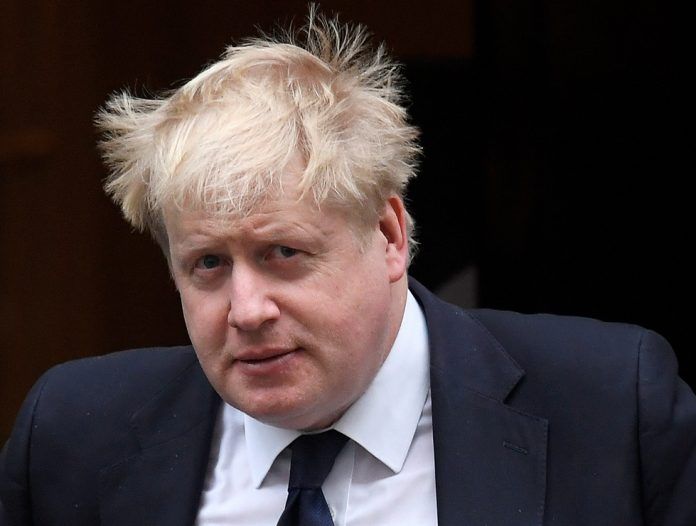By Alireza Kermani
The Iranian authorities have accused a number of individuals and countries of instigating the nationwide civil unrest which started on December 28 in Mashhad, capital of northeastern Khorasan Province, and spread to other parts of the country. It is a long list which includes former President Mahmoud Ahmadinejad, UK Foreign Secretary Boris Johnson, the monarchists, the people’s Mojahedin of Iran [MKO], the leftists, the nationalists, Saudi Arabia and even Michael D’Andrea [a.k.a Ayatollah Mike, the head of CIA’s Iran Mission Center.]
The rush to blame others is a transparent attempt by the regime to divert attention from its domestic problems.
During a cabinet meeting on December 31, President Hassan Rouhani criticized U.S. President Donald Trump for speaking out in support of the protesters. Rouhani said: “This man in America who is sympathizing today with our people has forgotten that he called the Iranian nation terrorists a few months ago.” Rouhani added: “Some Arab countries are also celebrating the unrest in Iran.”
On January 2, Iran’s Supreme Leader Ayatollah Ali Khamenei said: “Foreign enemies tried to turn legitimate protests into an insurgency to overthrow the Islamic Republic.” He added: “Once again, the nation tells the U.S., Britain, and those who seek to overthrow the Islamic Republic of Iran from abroad that you’ve failed, and you will fail in the future.”
Shortly after Ayatollah Khamenei’s remarks, the Secretary of Iran’s Supreme National Security Council, Ali Shamkhani, told the Beirut-based pan-Arabist satellite TV, Al Mayadeen: “Close to 27 percent of all the hashtags for #Iran on social media and the internet have been created by Saudi Arabia. Meanwhile, Israel and the West are responsible for promoting and propagating these hashtags.”
In an open letter to Ali Shamkhani, Sadeq Zibakalam [an academic, author and political analyst], aid: “I was stunned by your allegations against Saudi Arabia. I had no idea Riyadh could influence thousands of Iranians youth to take part in nationwide protests. I was truly saddened by your outrageous assertion.”
Meanwhile, the commander of the Islamic Revolutionary Guards Corps [IRGC], Major-General Mohammad Ali Jafari, has insinuated that a “former government official” might have incited the protests. Some sources believe that commander Jafari was referring to former President Mahmoud Ahmadinejad. Speaking to reporters, Jafari said: “The call to protest started with a website that is linked to an individual who, in the past, has expressed his opposition to the values and principles of the Islamic Republic.”
Former Intelligence Minister Heydar Moslehi [2009-2013] claims that the UK has played a major role in fueling the recent unrest. He said: “Since the 1979 Revolution, the MI6 has been plotting against the Islamic Republic. The UK Foreign Secretary travelled to Iran two months ago in order to pass on secret codes to the British spies operating inside our country.”
On January 5, Iran’s Attorney-General, Mohammad Jafar Montazeri, said the authorities had identified the person who had engineered the protests, IRNA [Islamic Republic News Agency] reported. “The recent protests, ostensibly against the high cost of living, were engineered by Michael D’Andrea, the former head of CIA’s Counterterrorism Center,” IRNA reported, quoting Montazeri. Montazeri also claimed that the CIA had set up an “operation room inside Iran where monarchists, leftists and MKO members gather to plot against the Islamic Republic.”
At a news conference on January 6, the Secretary of the Expediency Council, Mohsen Rezaei, asserted: “A few months ago, the head of the CIA’s Iran Mission Center held a meeting in Erbil, Iraq with the former secretary of Saddam Hussein’s son, Saddam’s brother-in-law, MKO members, Saudi agents and representatives from Massoud Barzani [former Kurdish President]. It was decided to launch a campaign on cyberspace in December with the ultimate goal of toppling the Islamic Republic in January and February.”
Rezaei claimed that the CIA had planned an “effective convergence strategy” to undermine the regime. He contended: “The agency thought that nationwide unrest would result in authorities losing control of the cities. Their plan was to arm the protesters, forcing deadly confrontations with the police and security forces. The crisis would have given an excuse to the U.S. to demand that the U.N. Human Rights Council [UNHRC] draft a resolution against Iran and impose fresh sanctions. And ultimately use the MKO in the final phase of their operation.” Rezaei said: “This plan was conceived at a meeting between Saudi officials and MKO representatives in Paris three years ago.”
These elaborate conspiracy theories put forward by present and former senior officials betray the establishment’s palpable fear of losing power and control. The protests posed an existential threat to the regime. They signaled the beginning of the end for the Islamic Republic. The truth is that most if not all of those who protested in the streets were ordinary Iranians who were angry at the state for failing to create jobs, improve living conditions, tackle social injustice and safeguard citizens’ human rights.


